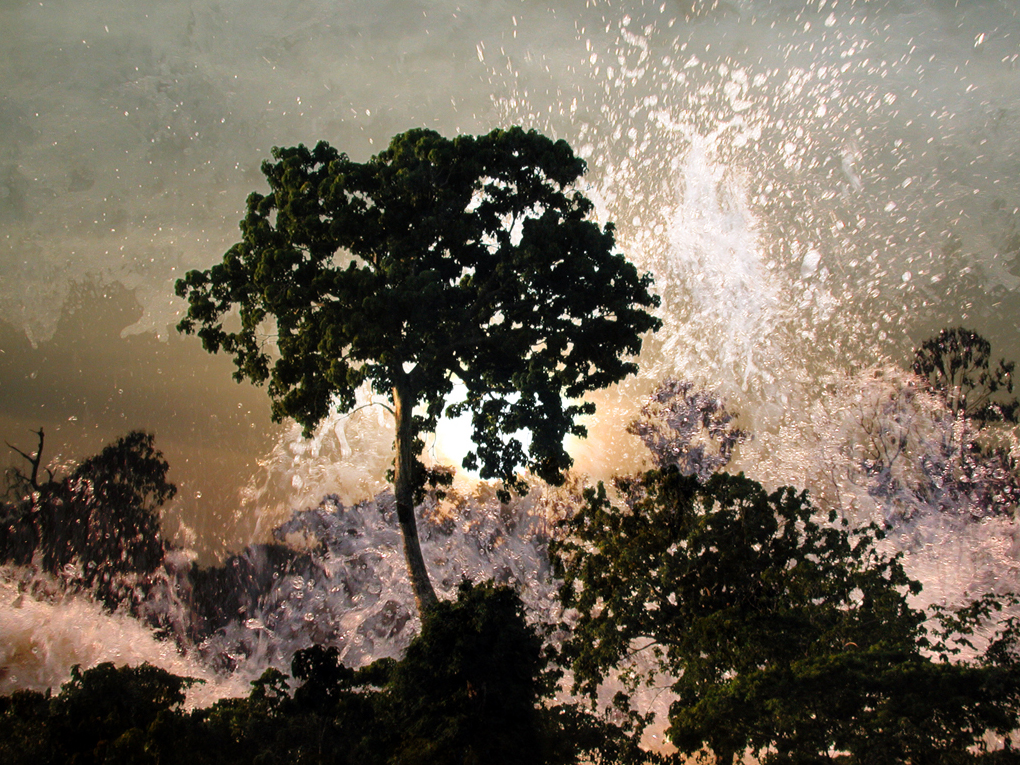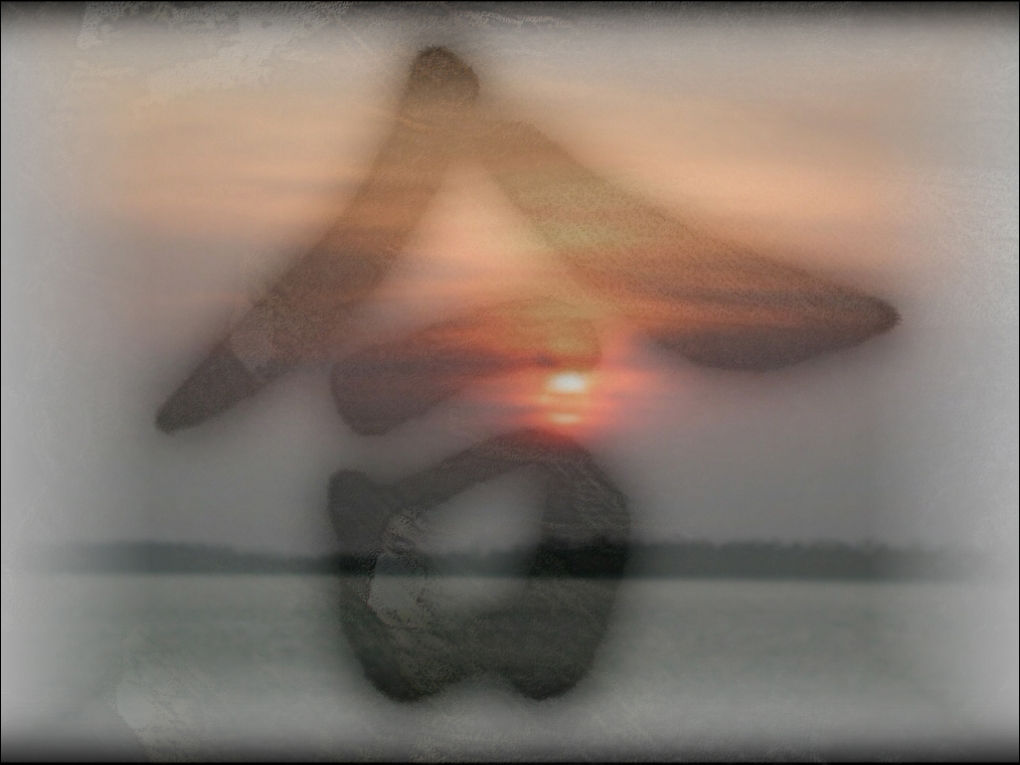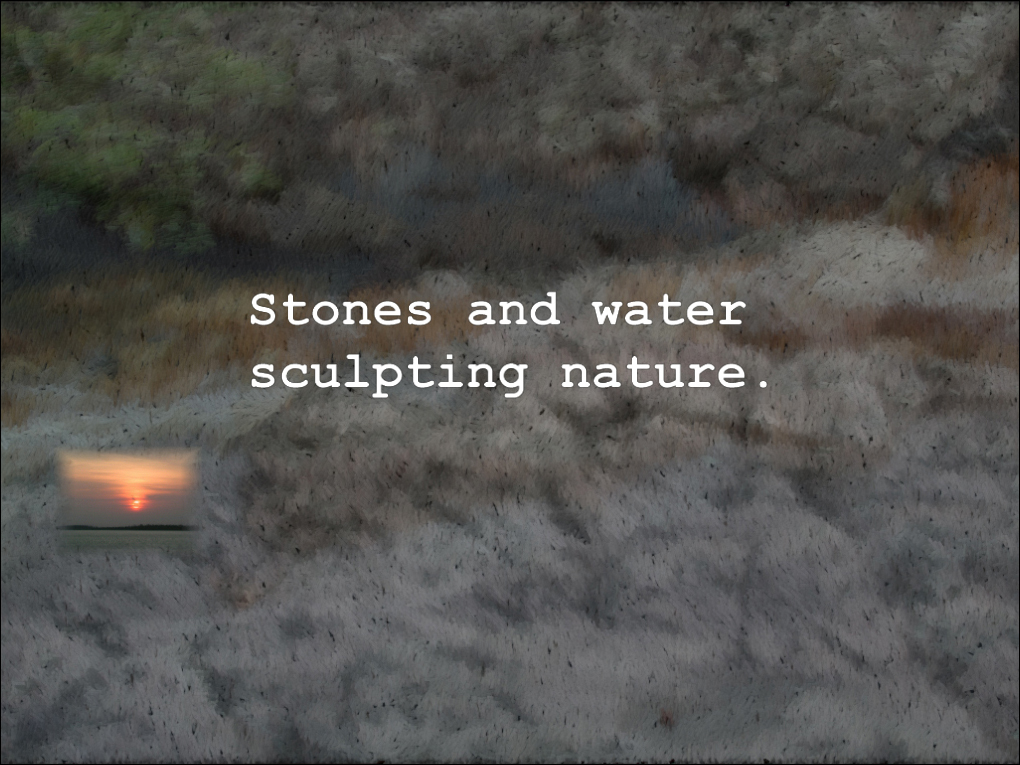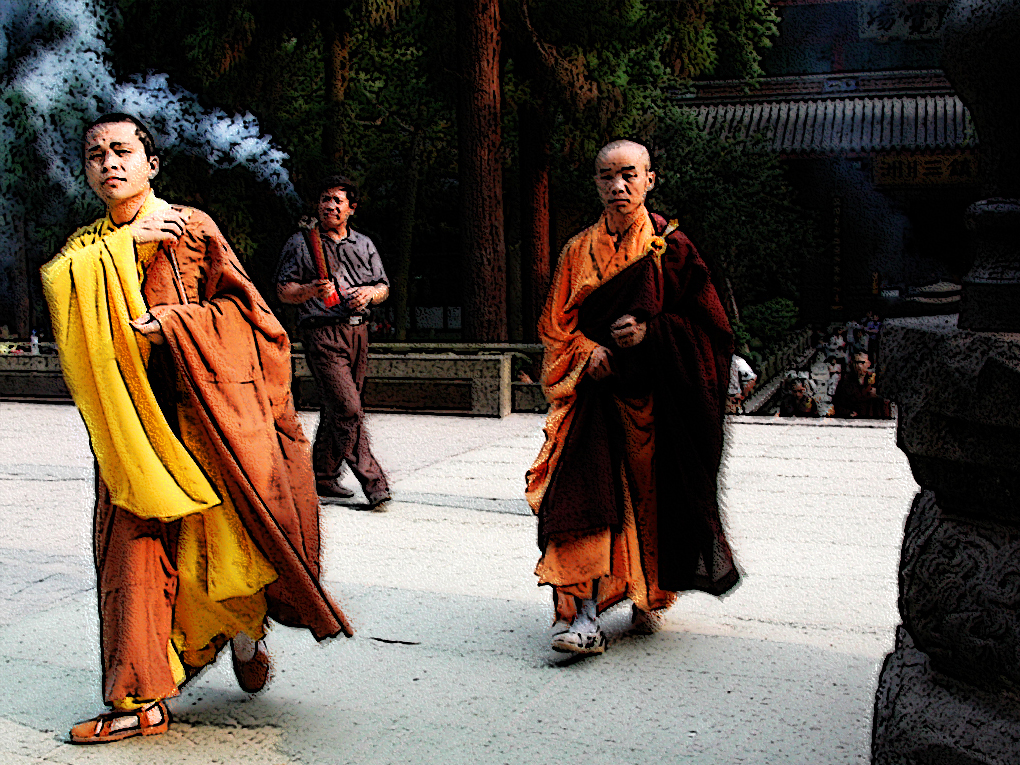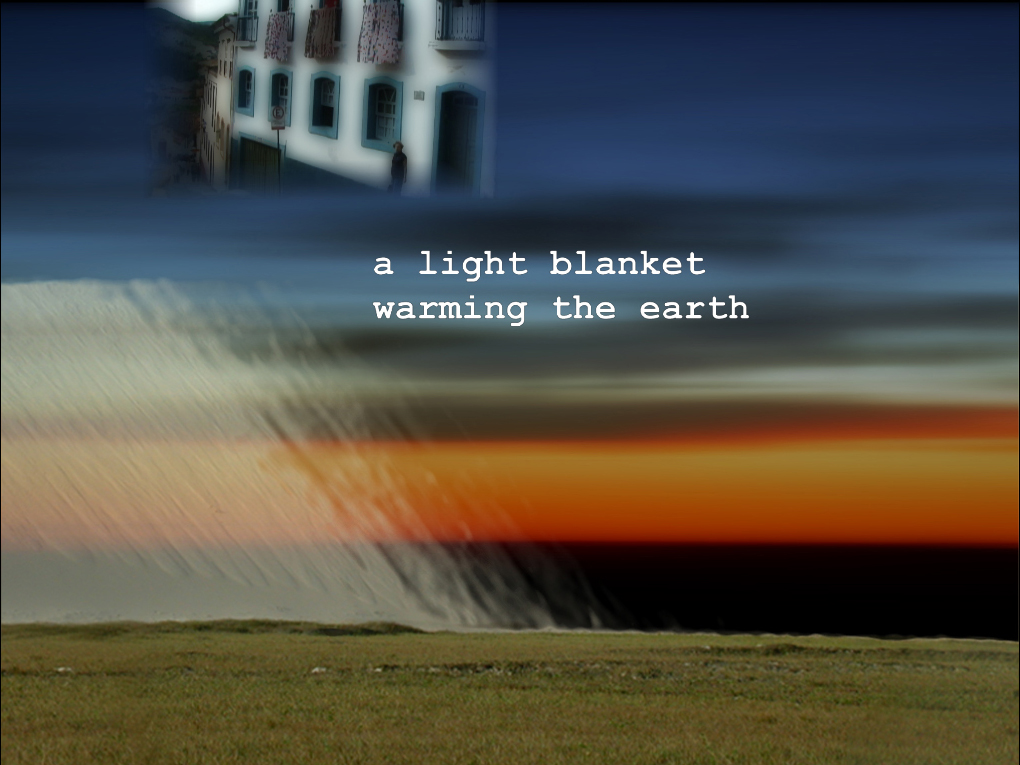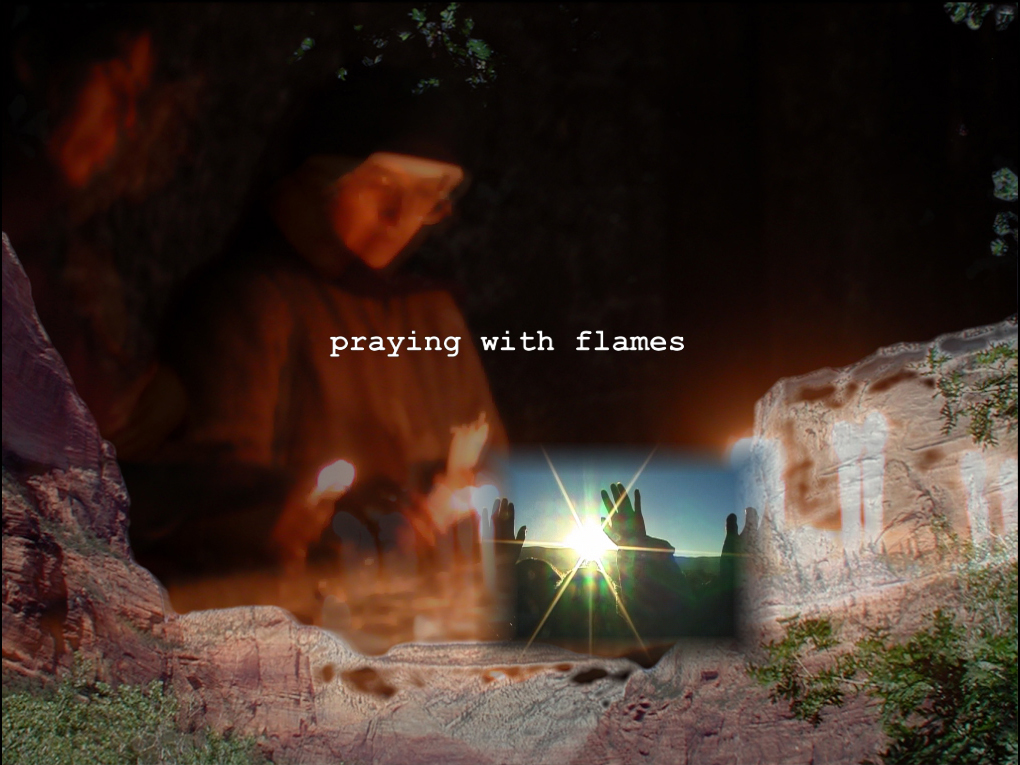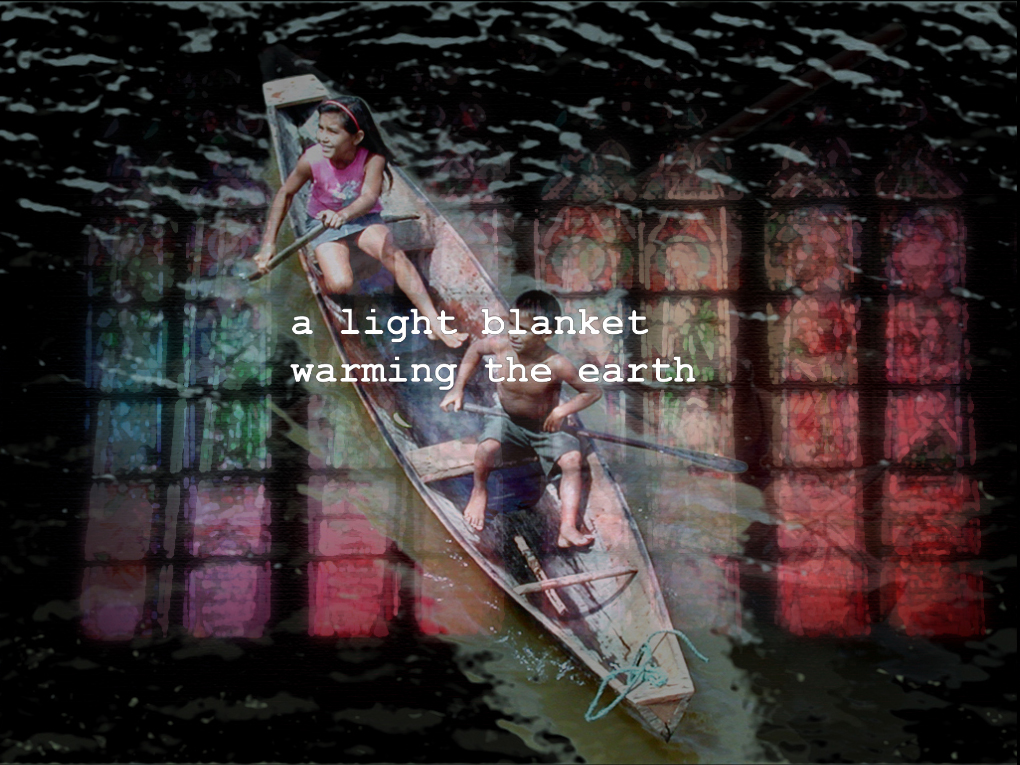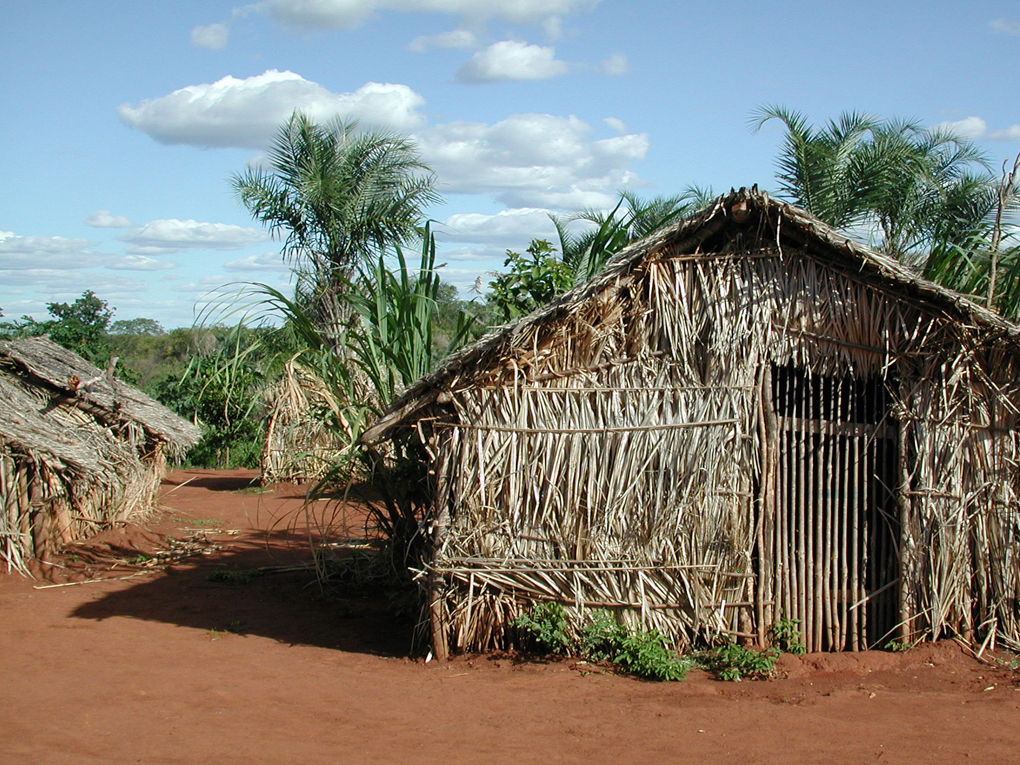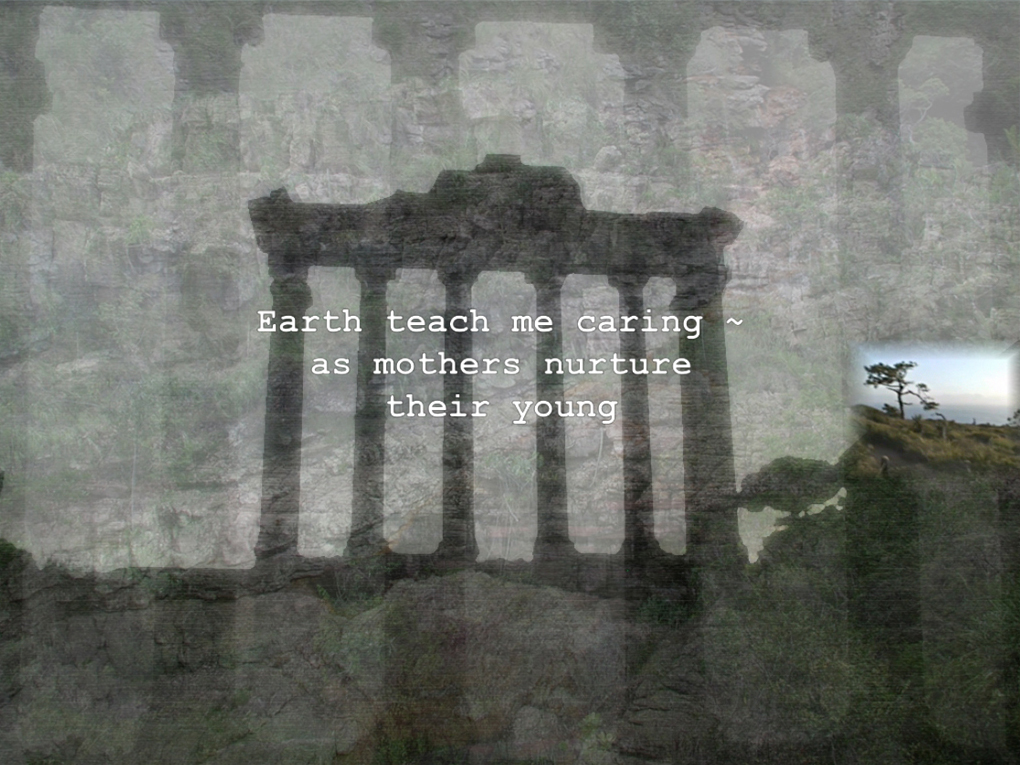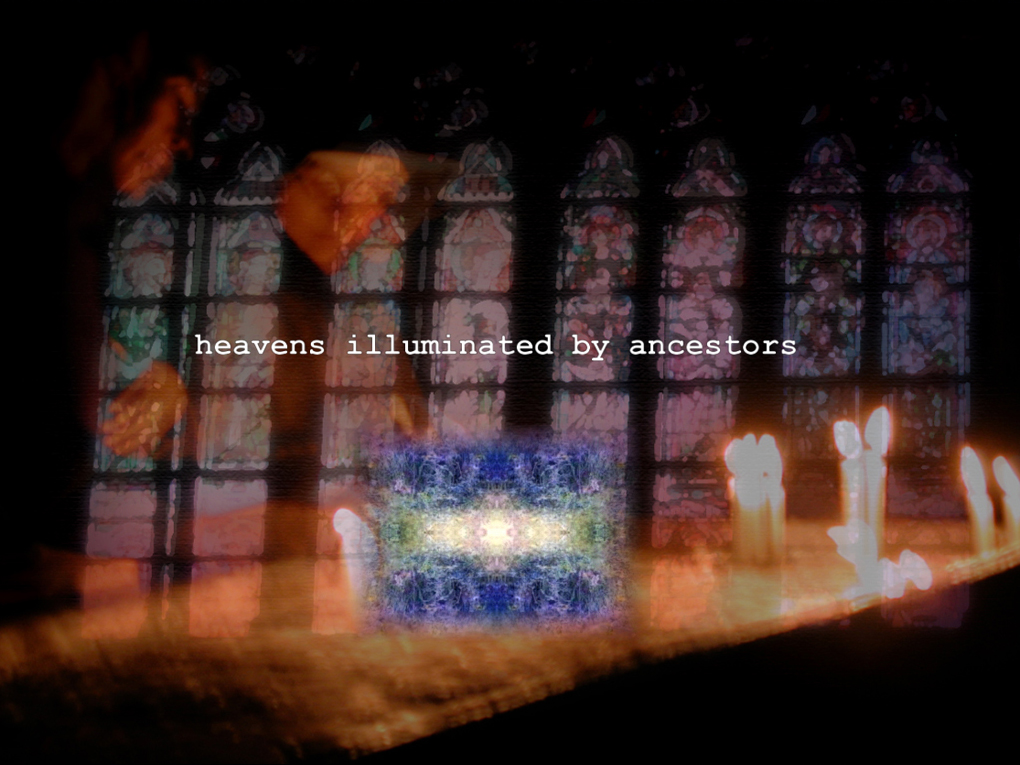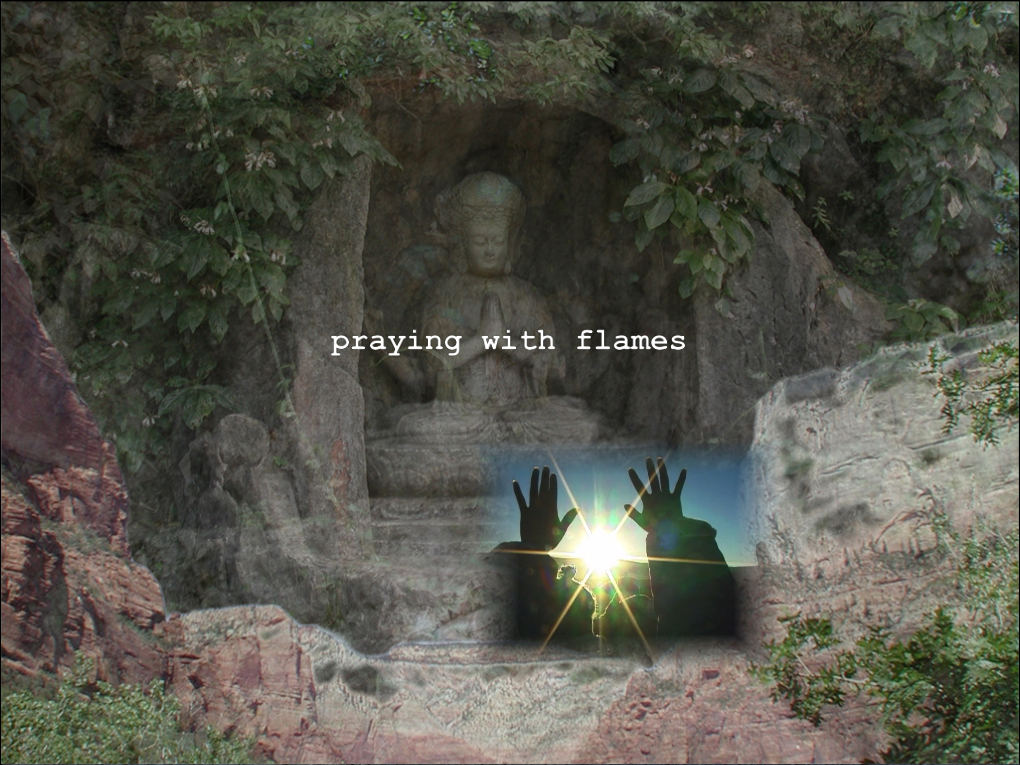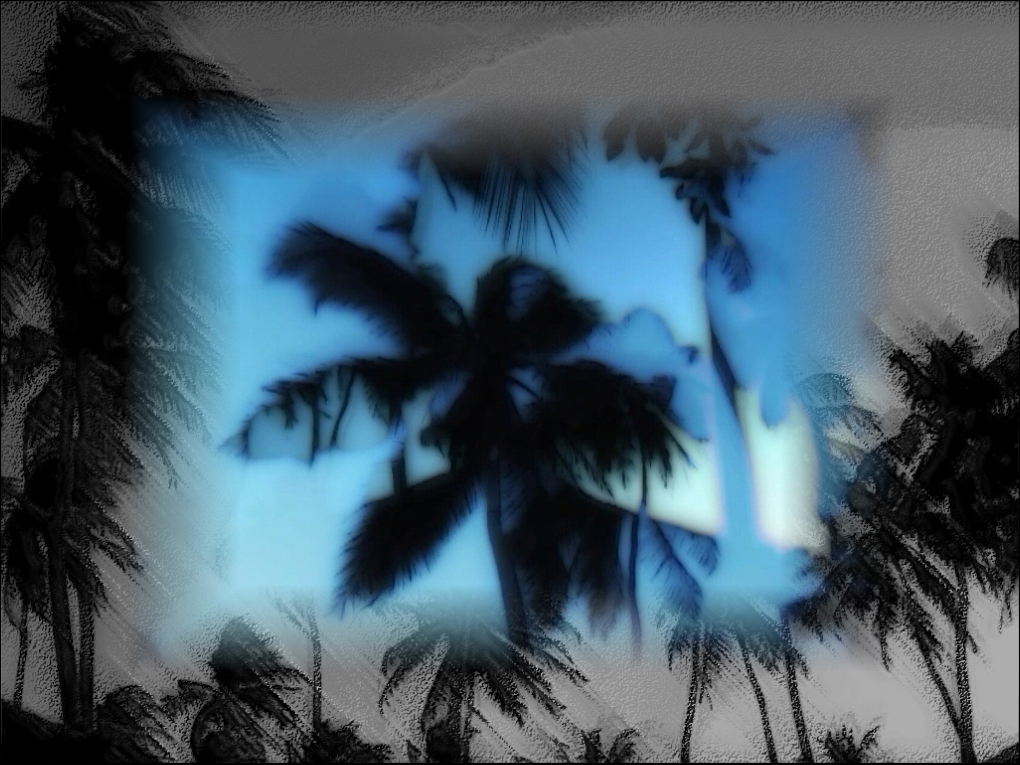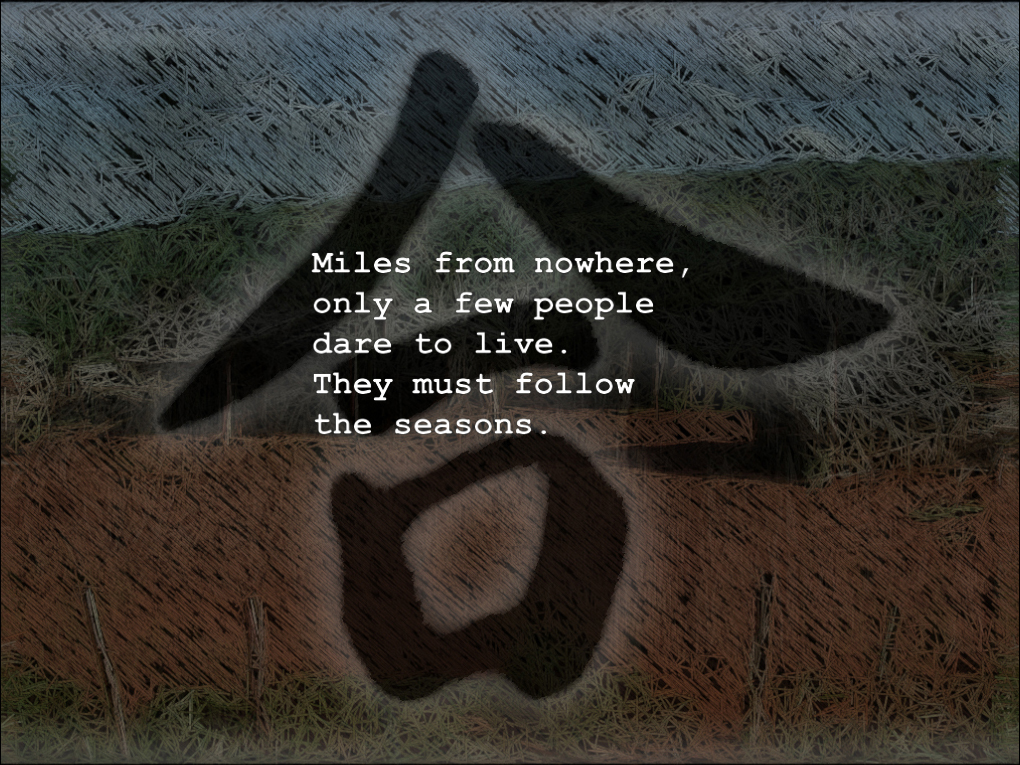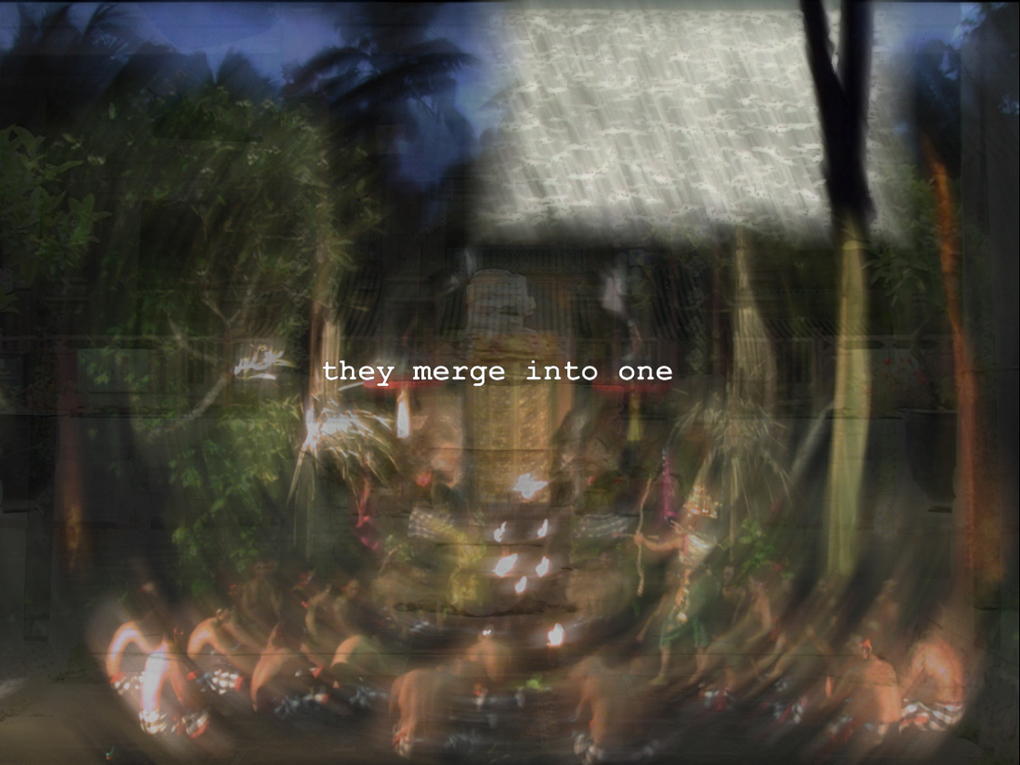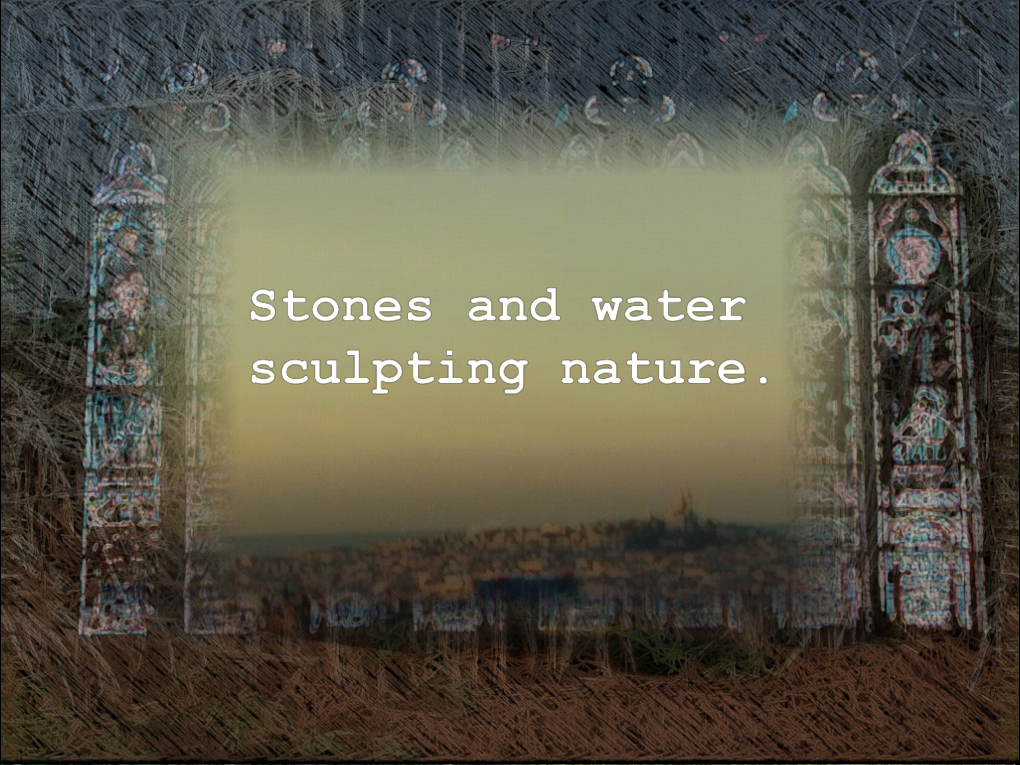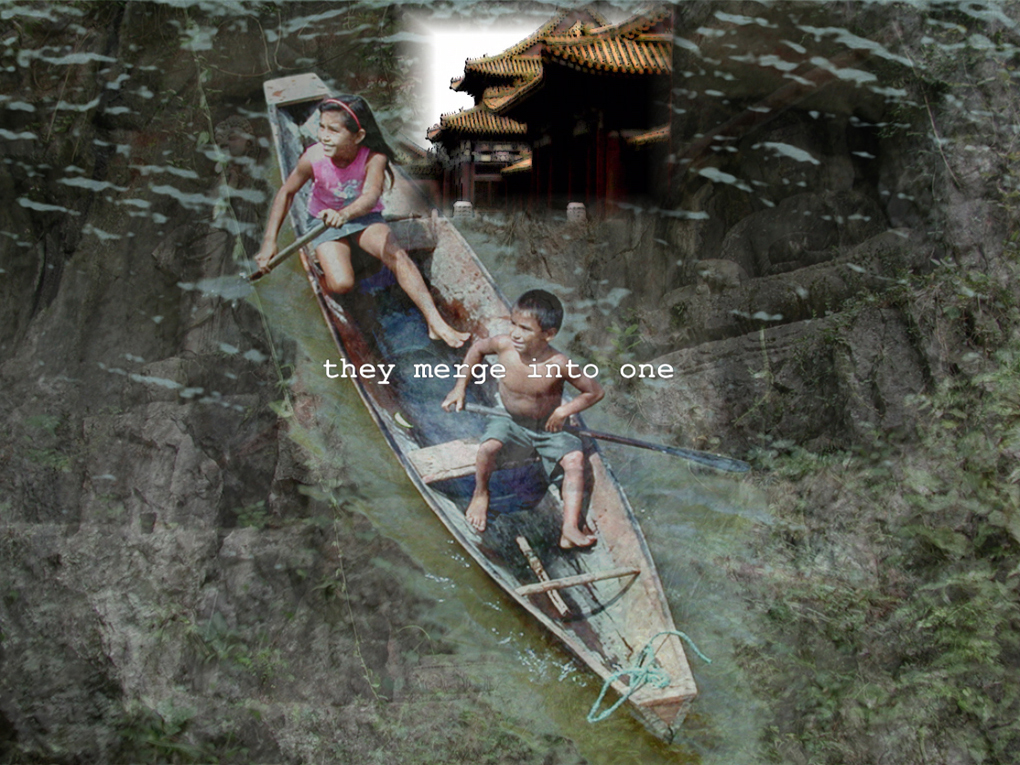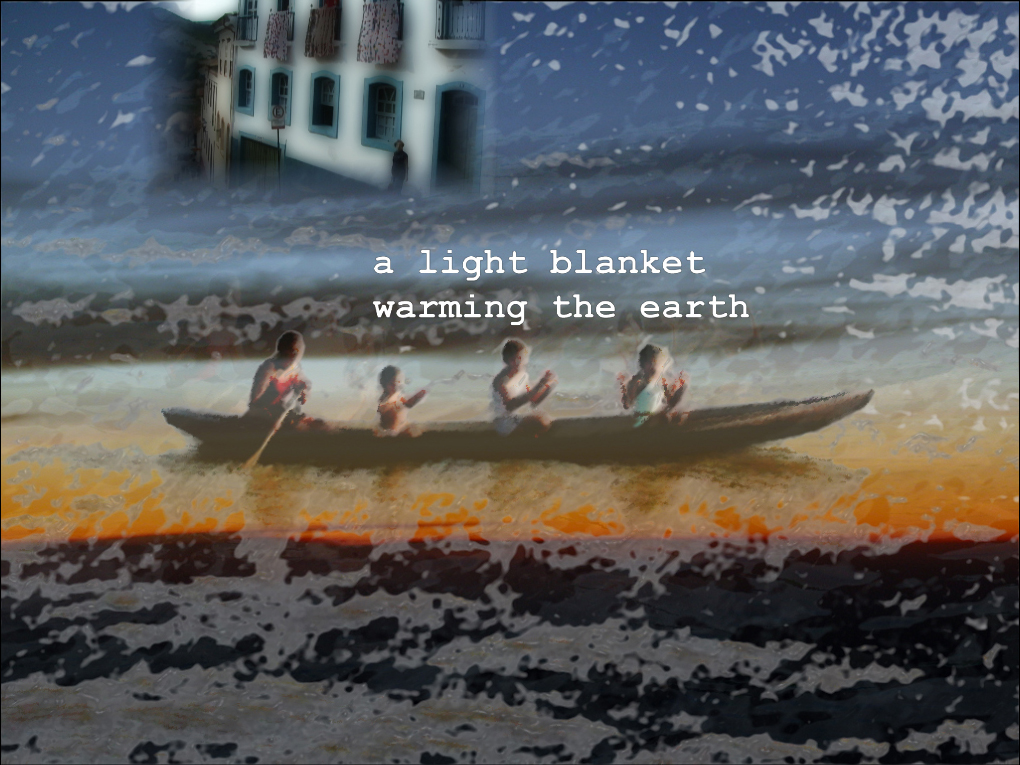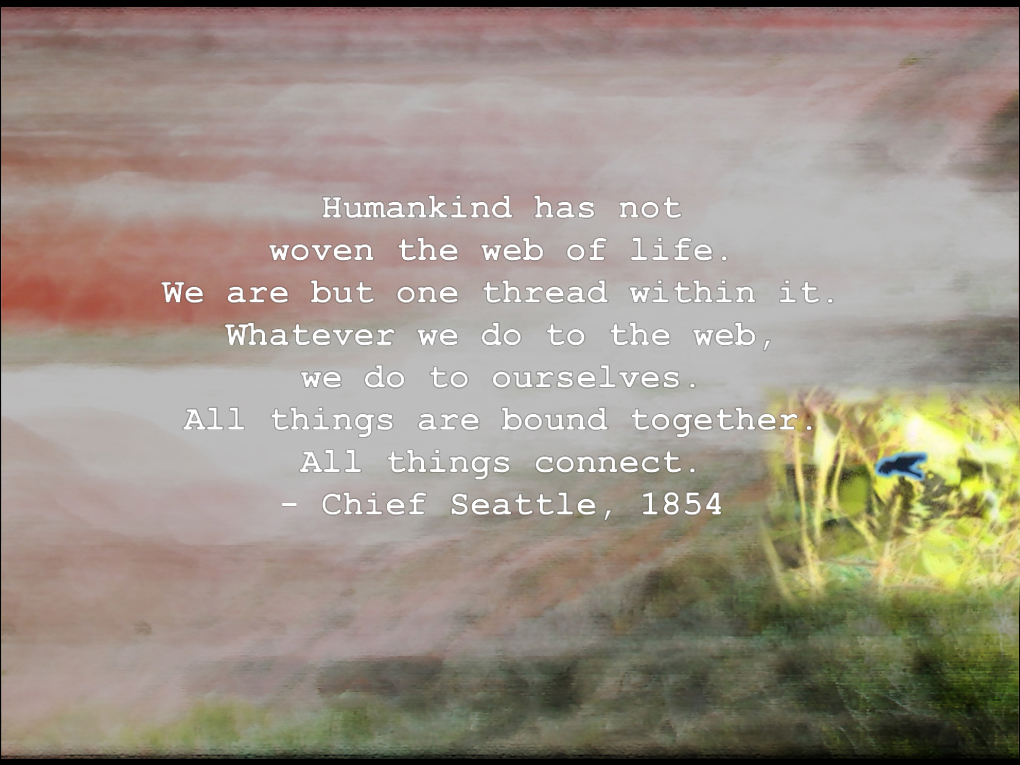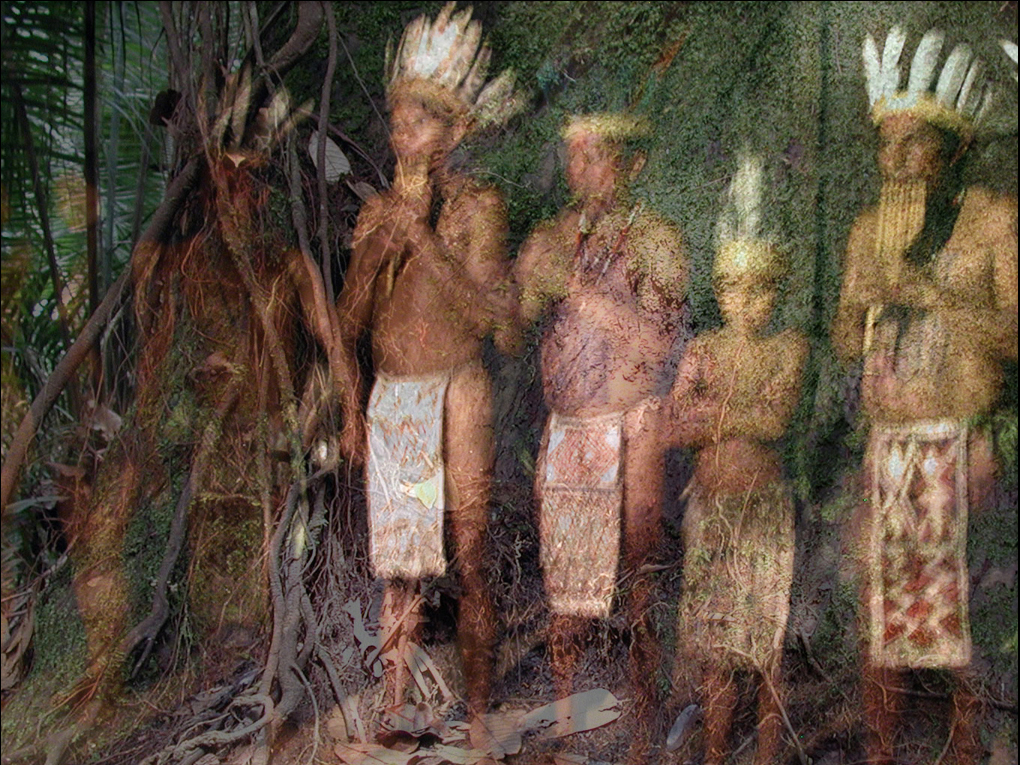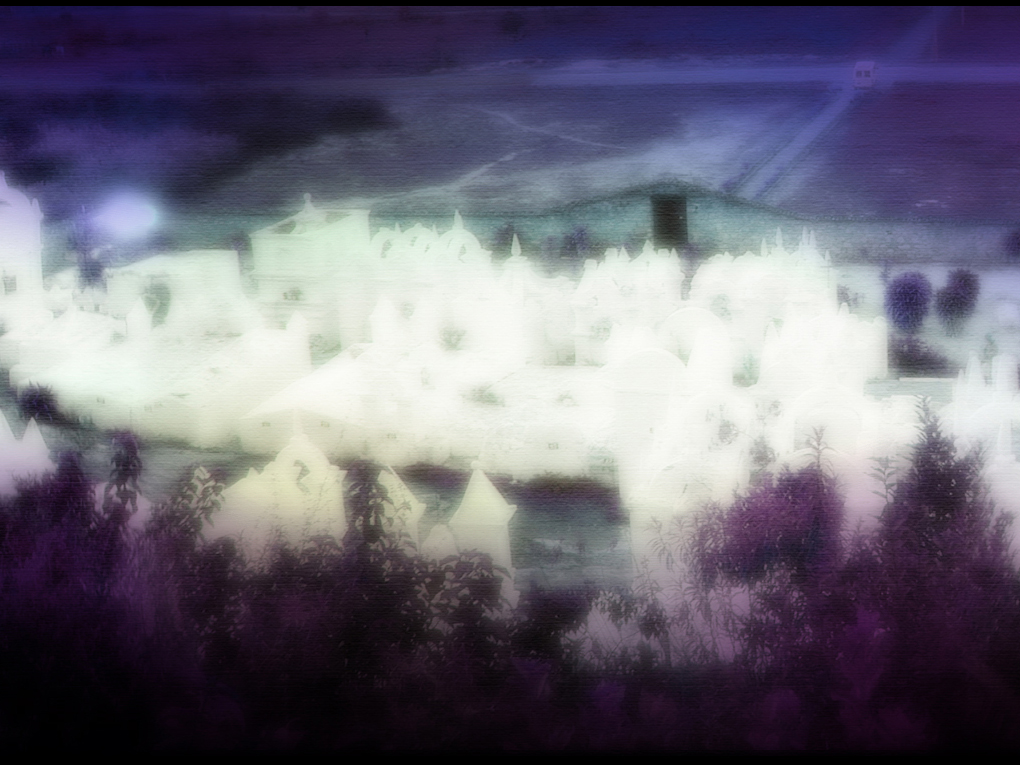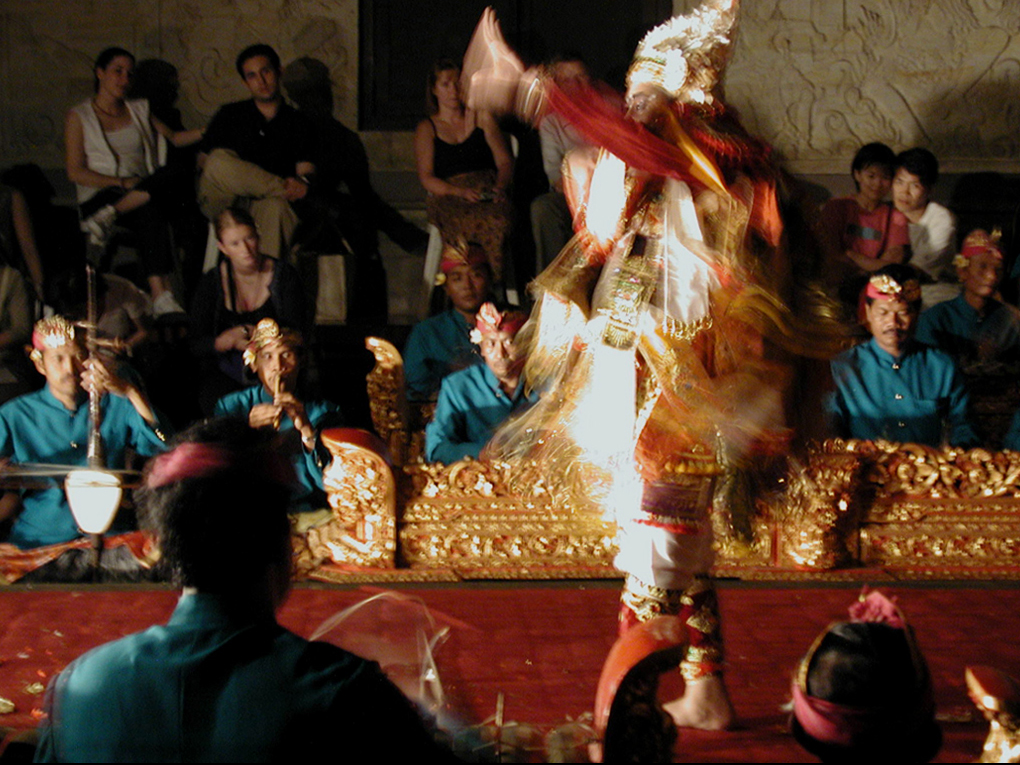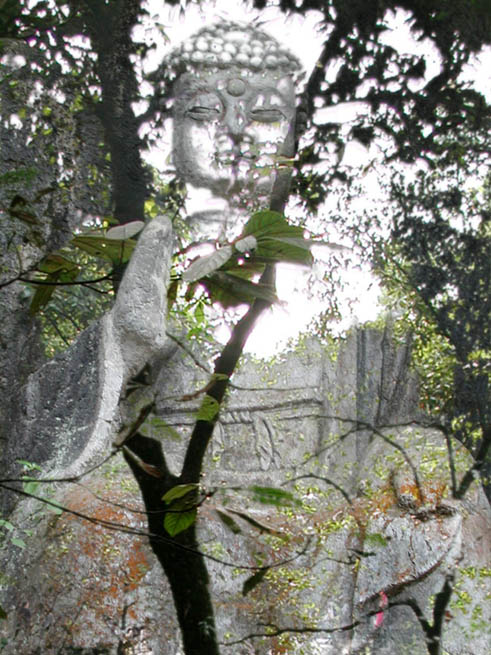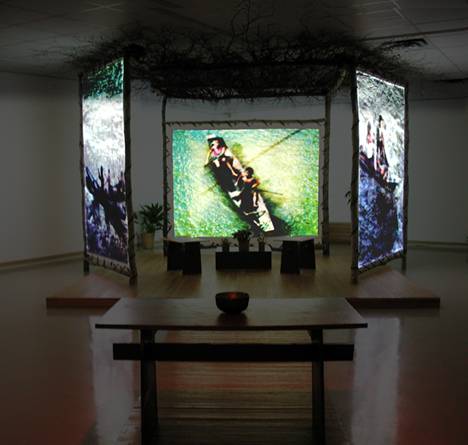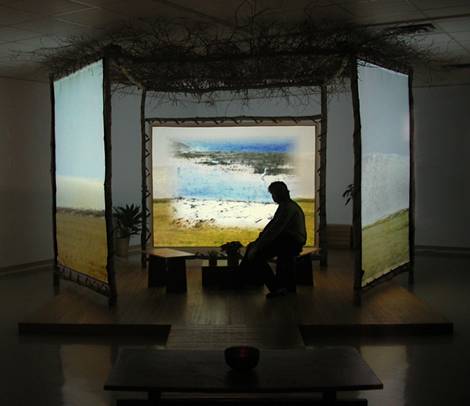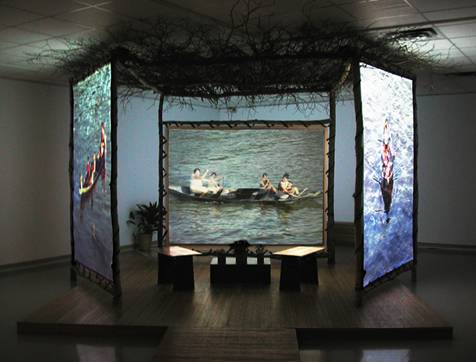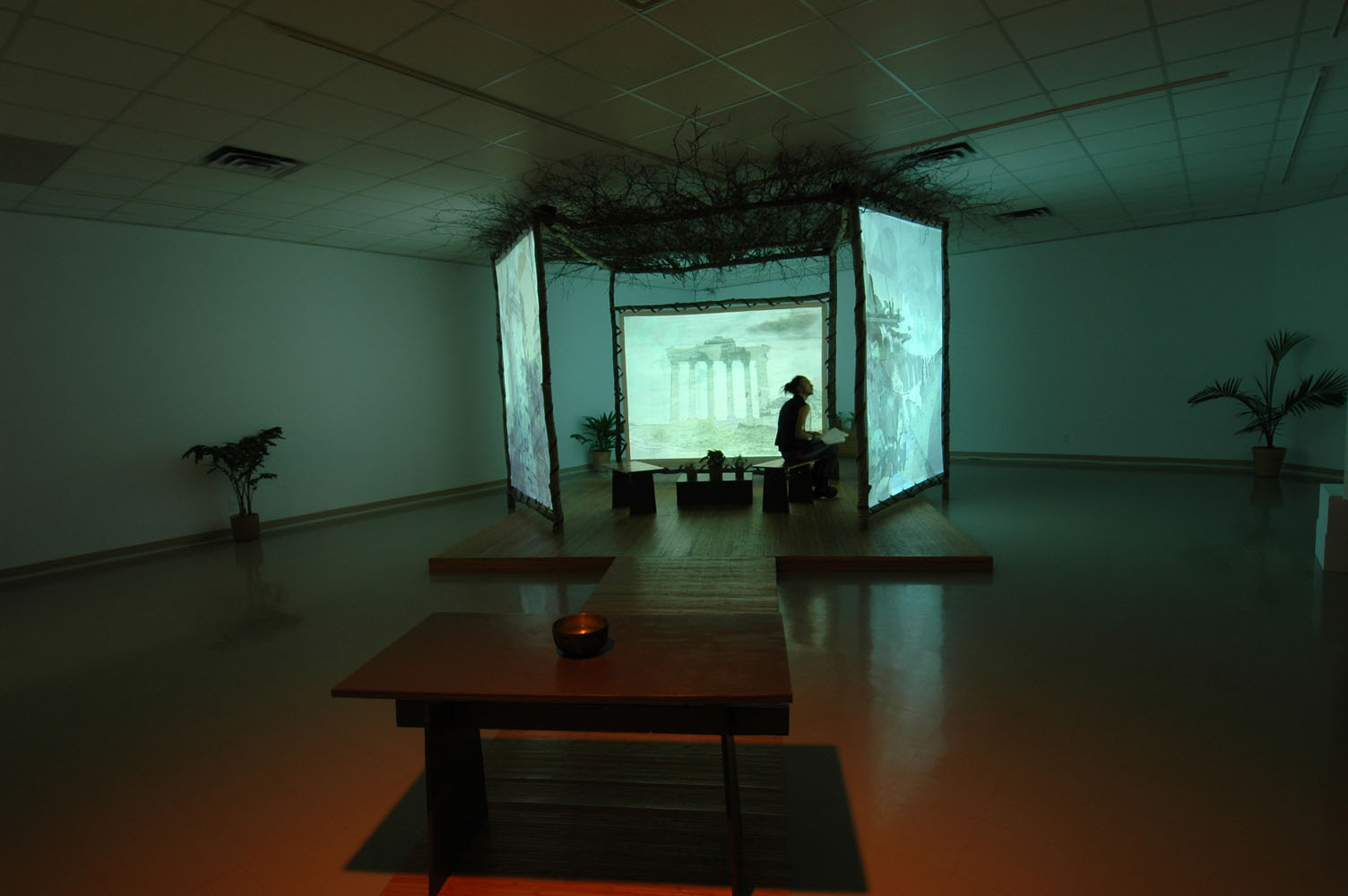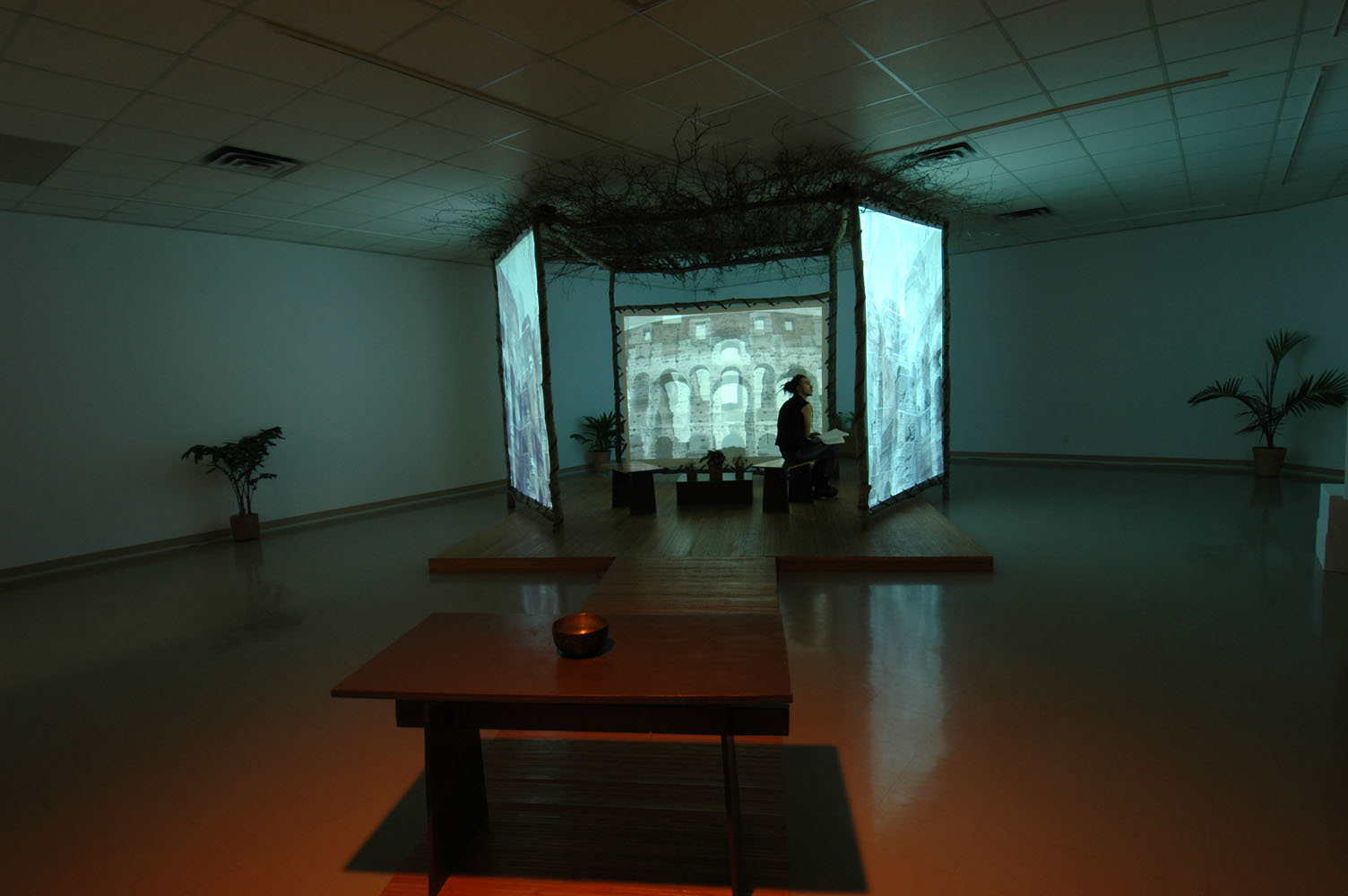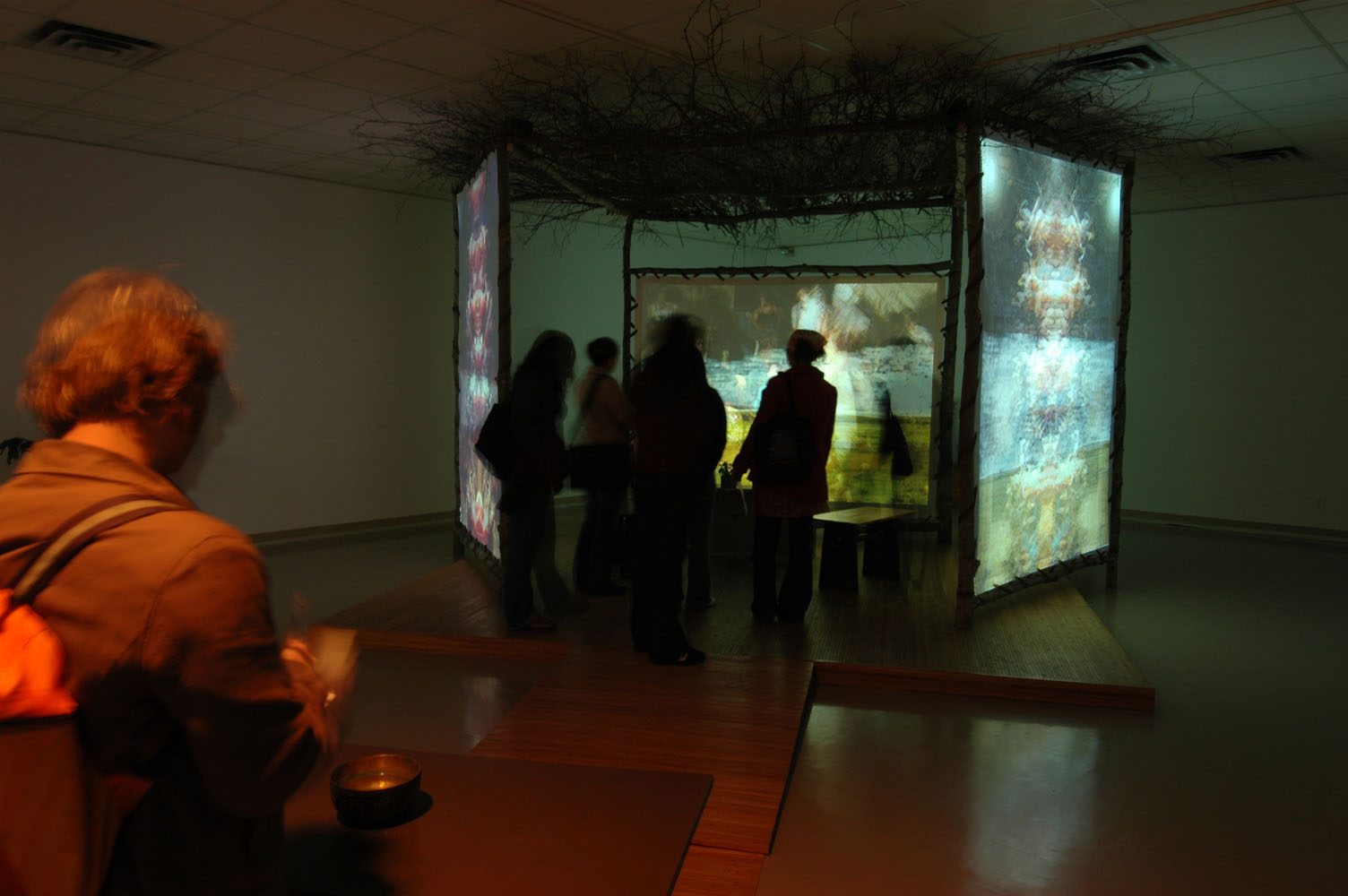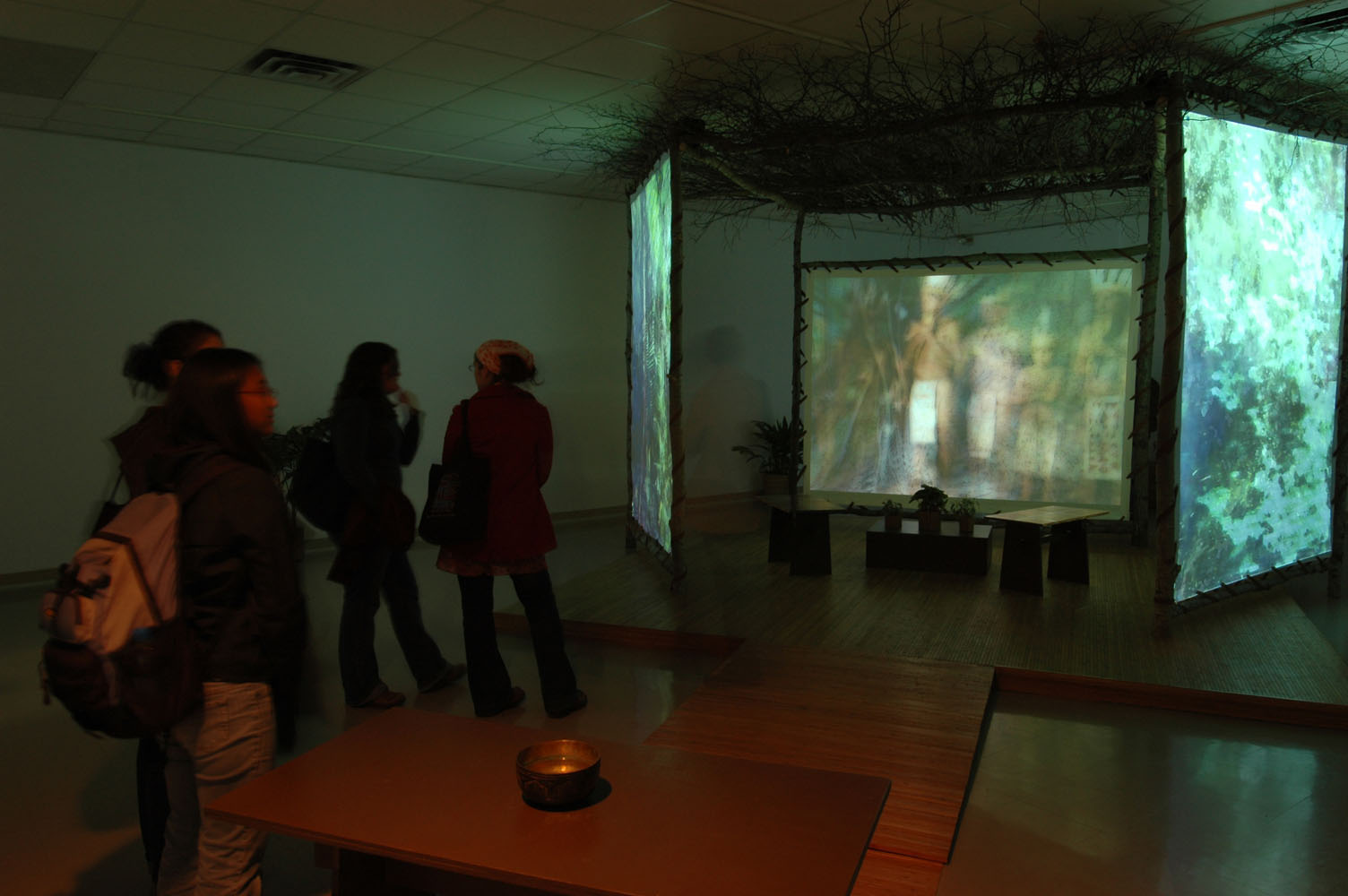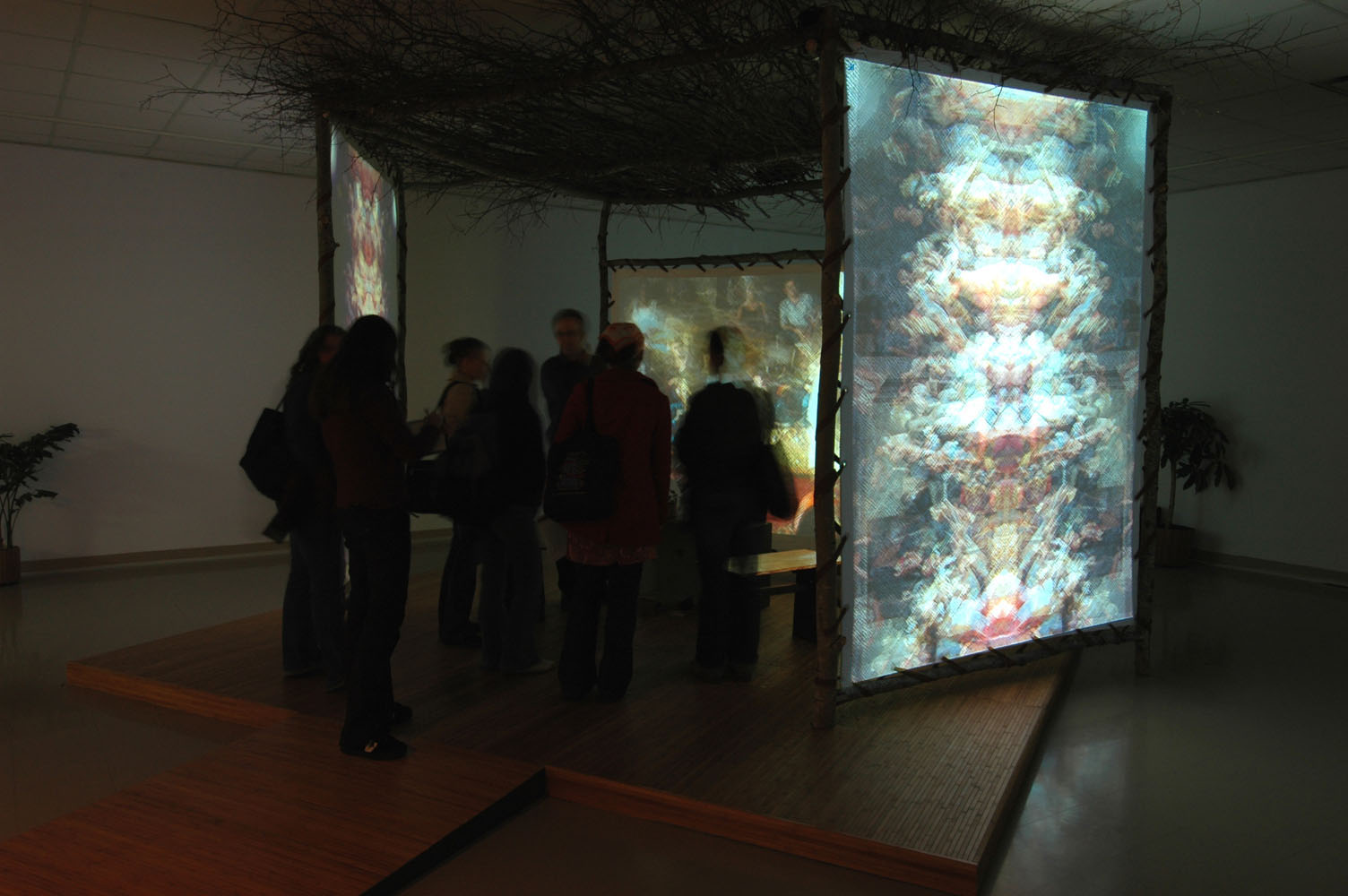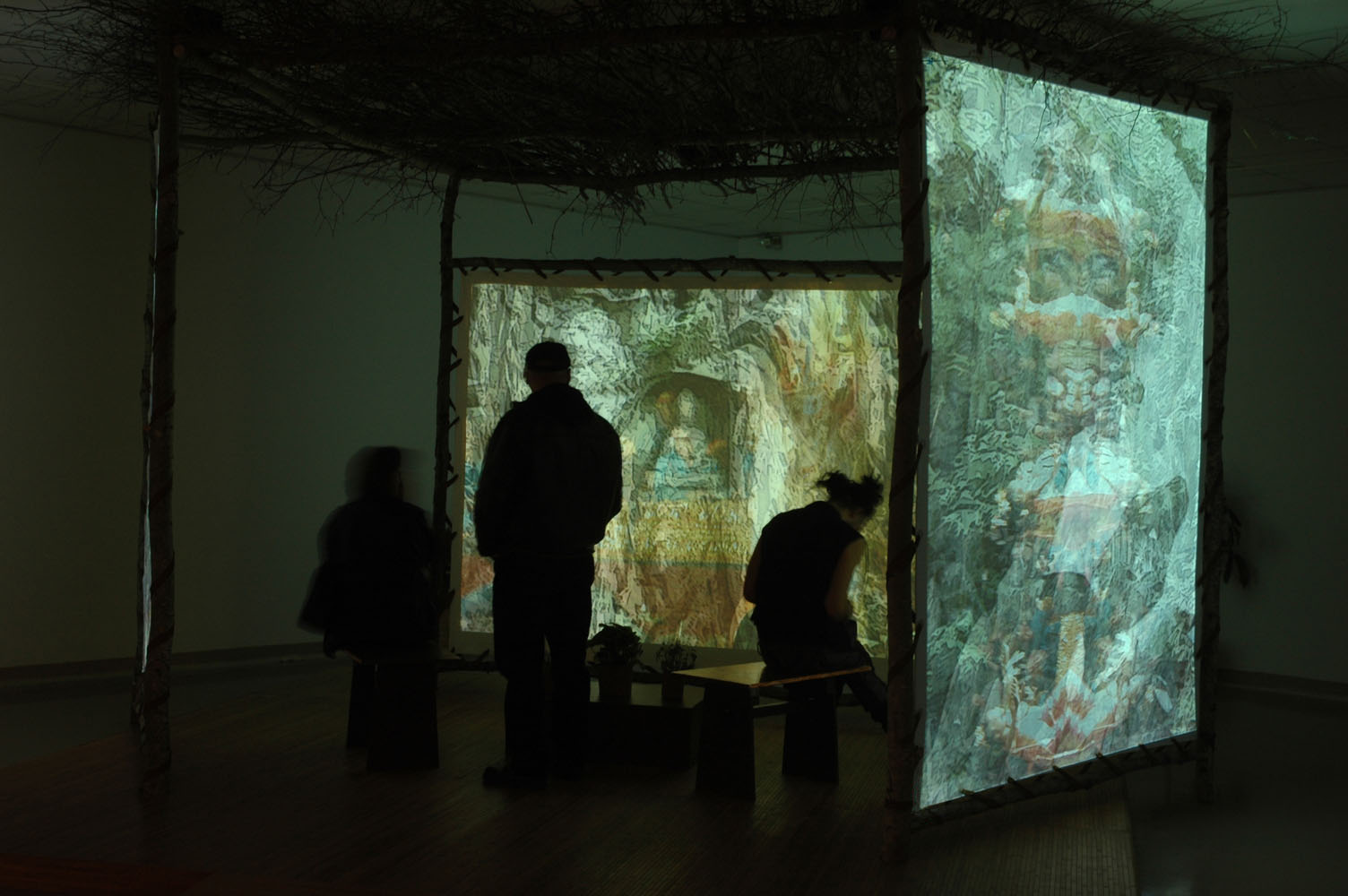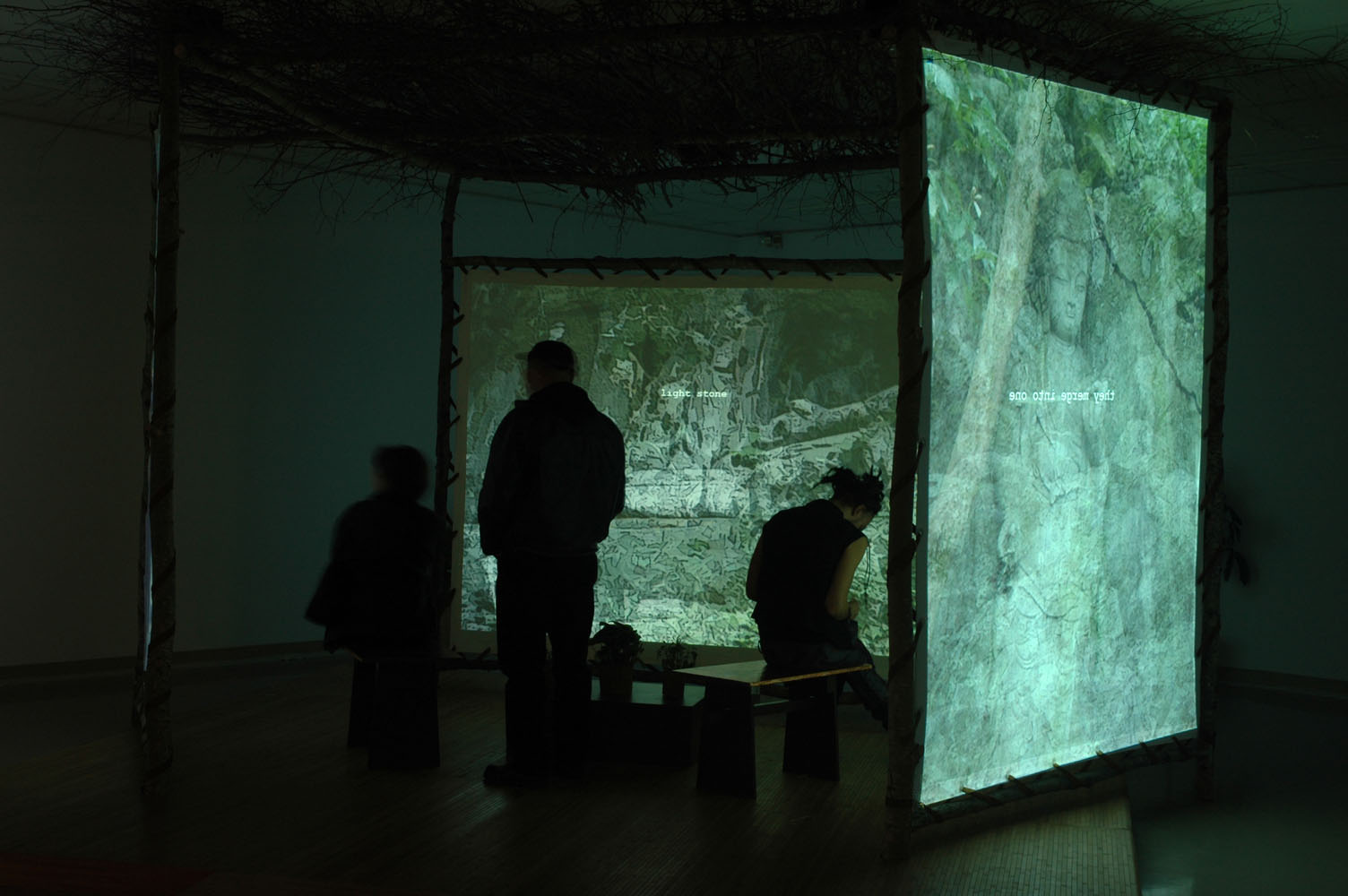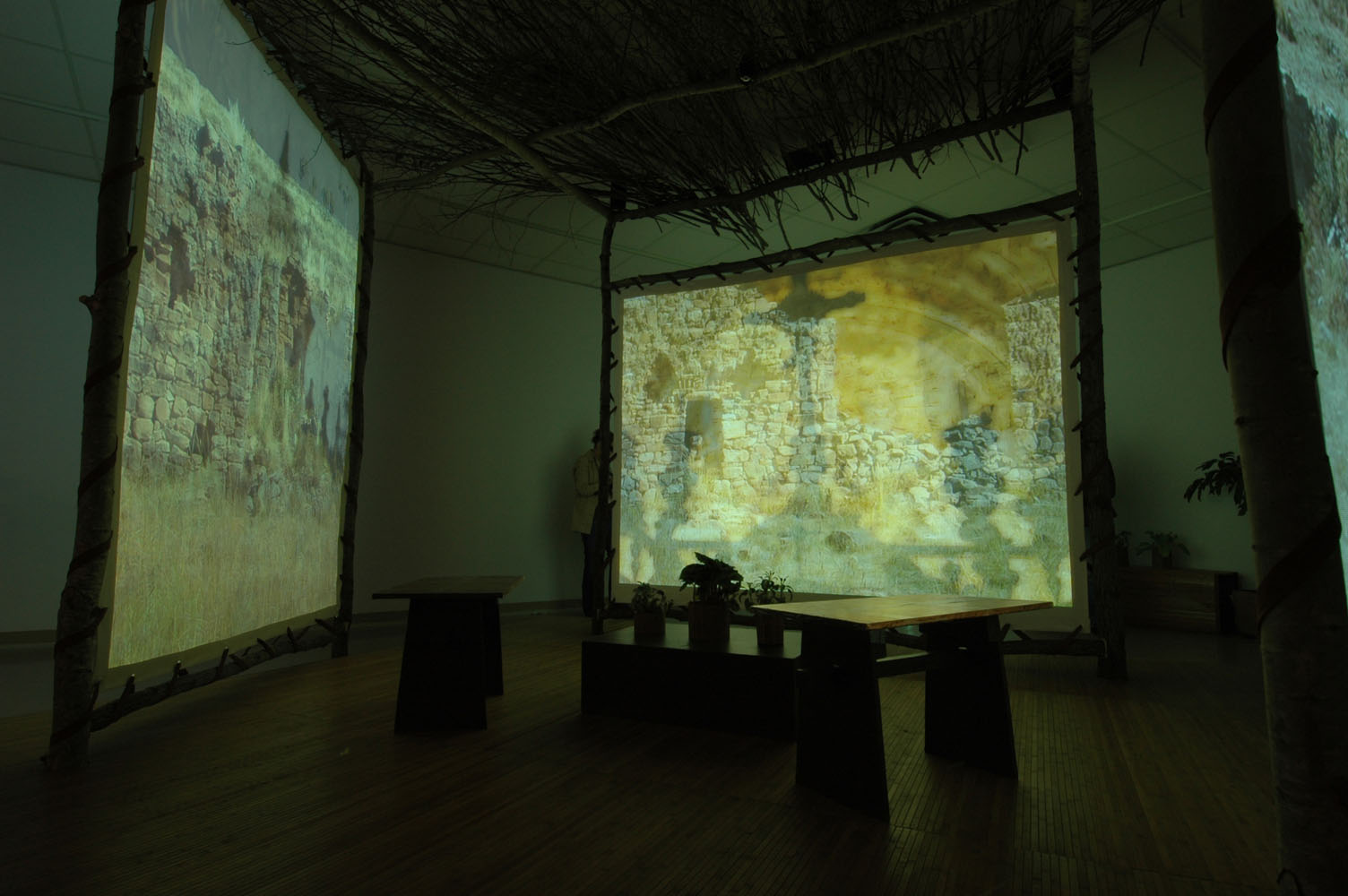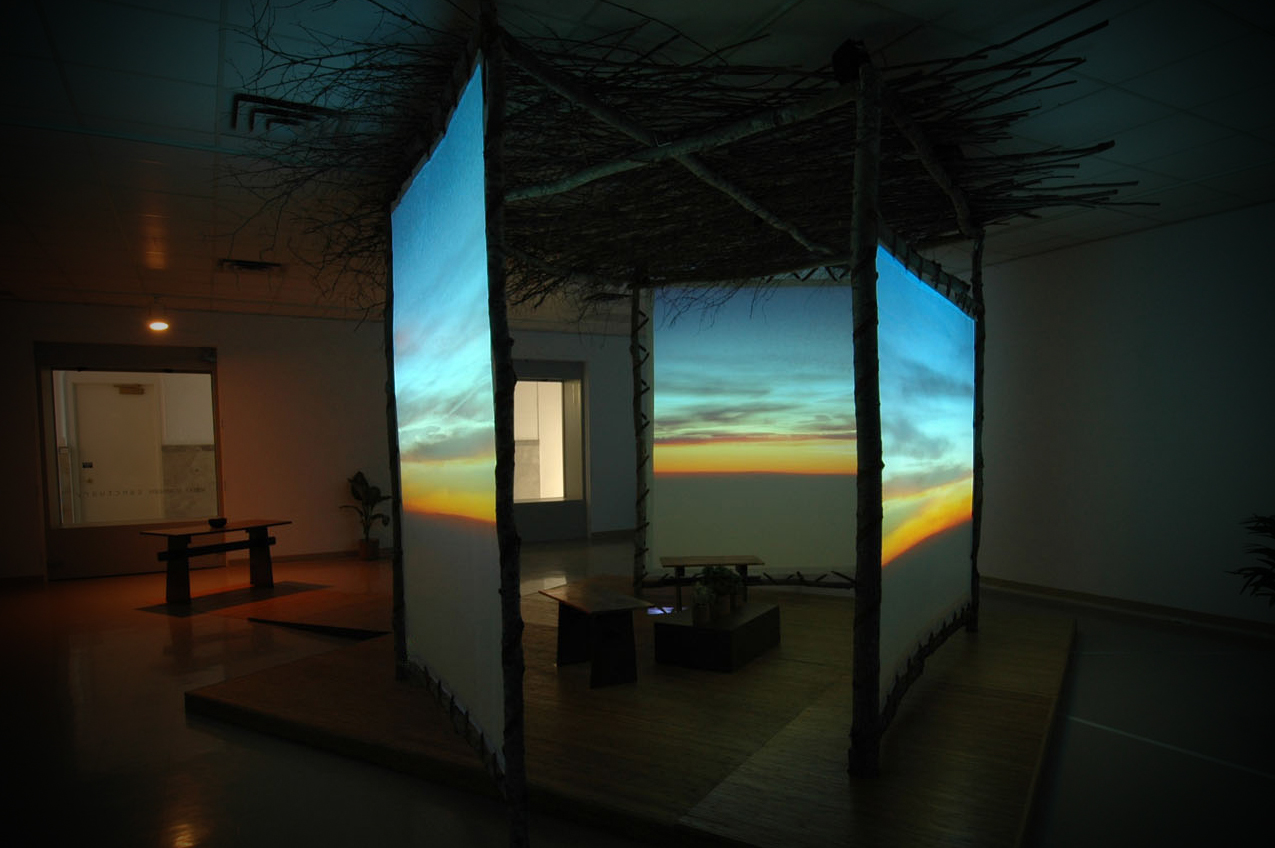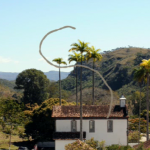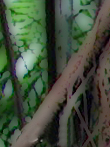Sanctuary:
An Interactive Architectural Installation
by Vibeke Sorensen
Sanctuary Buddha
In Memory of William Moritz
1941 – 2004
Sanctuary is an interactive architectural installation based on cross cultural interpretations of ‘safe haven’, focusing on natural and spiritual sanctuaries, and the common need for safety by all creatures of the world. Combining painting and photography, animation and documentary, the work employs tangible media in navigating images, sounds, texts, and movies recorded in many countries, including Italy, Bali, China, Japan, Denmark, France, Brazil and Bolivia. It is a global poem of peace.
Completed in September of 2005, its World Premiere took place on October 17, 2005 at Gallery One-One-One at the University of Manitoba, Winnipeg, Canada.
Sanctuary consists of a small house (20’wide x 20’deep x 14′ tall) made of wood and natural materials, and 4 wall-sized screens (3 used in Canada due to ceiling height restrictions). The floor is made of wood and there is a special entranceway that allows people in wheelchairs to enter. Influenced by Japanese Buddhist Temples and Native American use of stretched hides, used both for writing and shelter, the piece appears to be a glowing and breathing small house. At times the wall-screens appear to be windows opening onto wide landscapes. Other times the ‘windows’ become surfaces, enclosing the space, making a contemplative place for interacting with thoughts, and living things.
Thousands of media elements from around the world, including digital photography and digital video, are rear projected onto the screens, and acoustic and digital music, composed by Shahrokh Yadegari, move around the space. Text and poetry, including quotes from Native American thinkers, the Dalai Lama, Buddha, and others, are layered over the images as people interact. In order to navigate and transform the digital media materials, people touch living plants, water, and physical objects, rather than joysticks or computer hardware. No encumbering equipment is worn by users/interactors, as capacitance sensors detect touch in transparent and non-invasive ways. Because combinatorics and indeterminacy are used in real-time processes running on the computers, an emergent system results where each each interactor/user has a unique experience.
An alternative to and comment on the Virtual Reality ‘CAVE’, Sanctuary is not a closed box that isolates people from the immediate physical and natural environment. Instead, the sides are rotated open, and people can walk freely in and out, making a continuous integration of interior and exterior physical and digital spaces. The path, an entryway, has a table with a special bowl of water on it, and this prepares the visitor for entrance into a magical space where the mind, or soul, can be transformed. Like a ritual, the goal is to cause this transformation, step by step, of putting the person back into harmony with the universe. The water senses the person’s hands touching it, and this causes initial changes in the sound environment. When people walk forward along the path, and enter inside the sanctuary, and sit, the surface of the stools are sensitive, and this too causes changes. When the person touches the living plants, selected for their special tactile and responsive qualities, this affects other changes. In general, by using organic materials and objects familiar to people in the physical world, they know implicity how to interact. They do not need instructions. Moreover, people from a wide range of backgrounds often feel more welcome, and more at ease, than in what can otherwise be an alienating high technology environment.
Sanctuary is a dynamic multi-sensory environment where individuals as well as groups can contemplate, and interact in alternative ways. By including living plants, people are reminded that they too are alive, part of an ecosystem, and that actions have consequences that affect the whole. And like plants and all of life, people are fragile, and need a place of peace and safety in order to survive. The whole world is a sanctuary.
Credits and acknowledgements:
Music by Shahrokh Yadegari with vocals by Azam Ali, percussion by Greg Ellis, and violin by Keyevash Nourai
Production assistance provided by the midia@rt Laboratory of the School of Fine Arts at the Federal University of Minas Gerais, Belo Horizonte, Brazil with thanks to Professor Heitor Capuzzo and Ricardo Sousa.
Technology consulting from Professors Miller Puckette and Shahrokh Yadegari of the University of California, San Diego and Mark Danks of Electronic Arts. Custom hardware by James Snook of the Neurosciences Institute of La Jolla, California.
Made with support from the Rockefeller Foundation, Intel Corporation, the University of Southern California Zumberge Fund for Innovation in Research, and the Robert and Elizabeth Knight Distinguished Visiting Lecturer Program at the University of Manitoba, Winnipeg, Canada. Special thanks to the Manitoba Arts Council, the University of Manitoba Faculty of Architecture, Sharon Alward, Robert Epp, Cliff Eyland, Ken Jacobsen, Char O’Kell, Alex Poruchnyk, and Celia Rabinovitch.
Click here to see documentation of the installation at Gallery One-One-One (still photographs and video)
Click here to see an additional 14 image sequence of documentation of the installation at Gallery One-One-One
Click here to read an interview with Vibeke Sorensen by Cliff Eyland, Director of Gallery One-One-One

